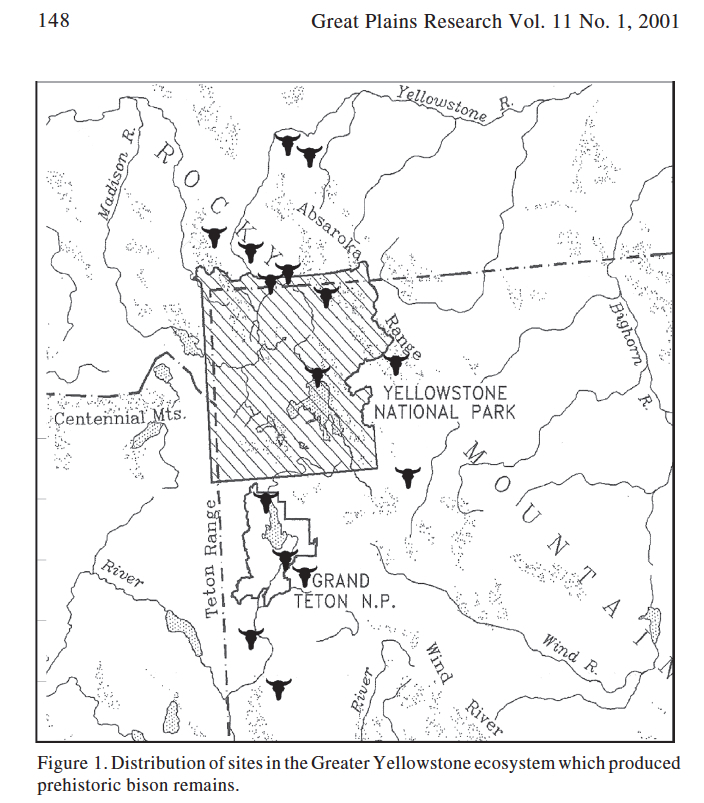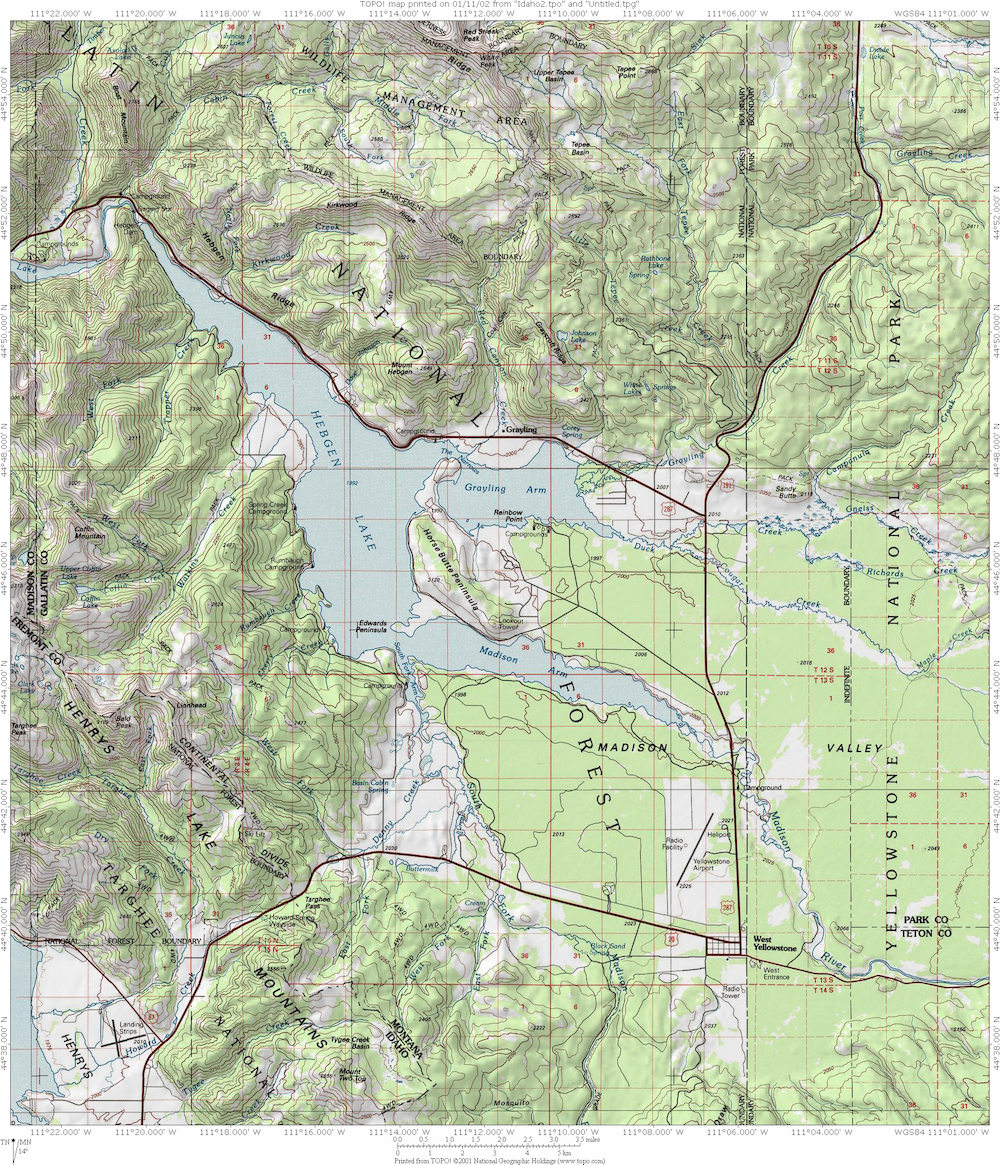Dwindling Buffalo Herds, 19th Century
The slaughter of the American Buffalo from 1720 through 1889, as graphically represented. Note that the 4-digit numbers are “dates of local extinction,” and do not represent herd numbers in that location. Bolded numbers do represent remaining buffalo in 1889.” …and the killing continues.
Historic Bison Range
(Click on Map for Larger Image)
Original distribution of plains bison (Bison bison bison) and wood bison (Bison bison athabascae) in North America, based on available zooarchaeological, paleontological, oral and written historical accounts. Holocene bison (Bison occidentalis) is an earlier form at the origin of B. b. bison and B. b. athabascae.
![]() Holocene bison
Holocene bison ![]() Wood bison
Wood bison ![]() Plains bison
Plains bison
Sources:
- Wild mammals of North America : biology, management, and conservation. George A Feldhamer; Bruce Carlyle Thompson; Joseph A Chapman. Baltimore, Md.: Johns Hopkins University Press, 2003.
- van Zyll de Jong, C. G. 1986. A systematic study of recent bison, with particular consideration of the wood bison (Publications in Natural Sciences No. 6.). National Museum of Natural Sciences, Ottawa, Ontario. Canada.
- Stephenson, R. O. et al. 2001. Wood bison in late Holocene Alaska and adjacent Canada: Paleontological, archaeological and historical records. Pages 125-159 in S. C. Gerlach and M. S. Murrya, eds. People and wildlife in northern North America: Essays in honor of R. Dale Guthrie (Brithish Archaeological Reports, International Series 994). Hadrian, Oxford, UK.
Yellowstone Bison Herd Migration
(Click on Map for Larger Image)
U. S. Department of the Interior, National Park Service, U.S. Department of Agriculture, U.S. Forest Service, Animal and Plant Health Inspection Service. December 20, 2000. Final Environmental Impact Statement and Bison Management Plan for the State of Montana and Yellowstone National Park, Volume I
Knowledge of the past can help future herds
(Click on Map for Larger Image)
Cannon, Kenneth P. 2001. What The Past Can Provide: Contribution of Prehistoric Bison Studes to Modern Bison Management. Great Plains Research 11(1): 145-174.
Regional Map
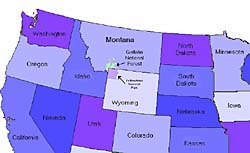
Yellowstone National Park is located in the northwest corner of Wyoming, and borders the states of Montana and Idaho.
Yellowstone National Park Buffalo Migration Routes
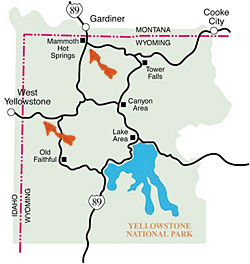
Yellowstone National Park is the world's first national park. Yellowstone covers 2.2 million acres at an average elevation of 7,300 feet (2300m). Because of the high Yellowstone plateau, winters are harsh. For thousands of years, buffalo and elk have migrated to lower elevation valleys surrounding the park. Here, the red arrows represent the migration paths of the buffalo. Elk carry brucellosis and migrate outside the park too, and according to the National Park Service Yellowstone has between 5,000 and 10,000 elk in the summer, and less than 5,000 elk in the winter. BFC would like to know why the “wildlife management” agencies aren’t concerned with elk infecting cattle.
Greater Yellowstone Ecosystem, including National Forest Lands
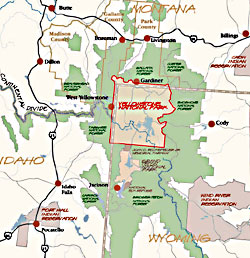
The National Forest lands (in green) surrounding Yellowstone National Park play an integral role in the Greater Yellowstone Ecosystem. National Forest lands are public lands, meaning they are designed for and dedicated to the preservation of wildlife. Unfortunately cattle are given priority on the National Forest lands surrounding Yellowstone. Let's return the National Forest back to the wildlife and let the buffalo roam.
Horse Butte Peninsula
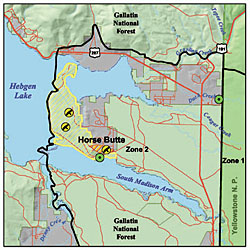
This peninsula extends into Hebgen Lake just west of Yellowstone National Park. Horse Butte is a favorite spring calving ground for the Yellowstone Bison. The capture facility is where the green dot on the map is located. The Horse Butte peninsula should be protected as wildlife habitat. There are no cattle in the West Yellowstone area until June 1st. So why are they slaughtering the Yellowstone buffalo?
(Green dots are the locations of the capture facilities)
Hebgen Basin
Hebgen Basin provides critical habitat for the migratory Central interior buffalo herd, one of two distinct subpopulations in the Yellowstone population. Noticeable in this topographical relief map is the lower elevation lands draining Duck Creek, Cougar Creek, and the Madison River, corridors for the buffalo's migrations. Biologists predict about 43,600 acres of buffalo habitat can be found in Hebgen Basin.




